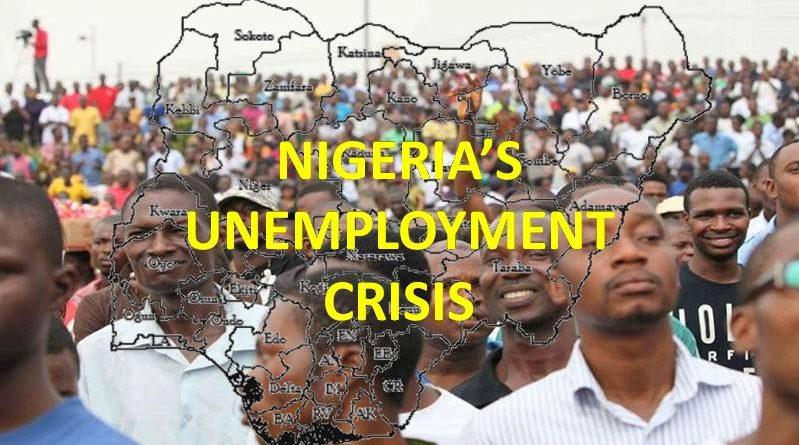Nigeria’s Current Unemployment Crisis is Worst in History, World Bank Report – Agwu, C. J
In a new report titled ‘Of Roads Less Travelled: Assessing the Potential for Migration to Provide Overseas Jobs for Nigeria’s Youth’, the World Bank said that Nigeria’s current unemployment crisis is the worst in its history.
The report published on July 12, 2021, by the World Bank with support from the Korea World Bank Partnership Facility (KWPF) and the Rapid Social Response (RSR) trust funds. The report synthesizes the available evidence to understand the stock and flows of international migrants from Nigeria, major countries of destination, and key areas of vulnerabilities while identifying gaps in evidence to inform decision-making
It said that the expanding working-age population combined with scarce domestic employment opportunities is creating high rates of unemployment, particularly for youth (42.5 per cent) compared to non-youth (26.3 per cent), giving a combined unemployment average of around 35 per cent.
“Between 2014 and 2020, Nigeria’s working-age population grew from 102 million to 122 million, growing at an average rate of approximately three per cent per year. Similarly, Nigeria’s active labor force population, i.e., those willing and able to work among the working-age population, grew from 73 million in 2014 to 90 million in 2018, adding 17.5 million new entrants to Nigeria’s active labor force. Since 2018, however, the active labor force population has dramatically decreased to around 70 million — lower than the level in 2014 — while the number of Nigerians who are in the working-age population but not active in the labor force has increased from 29 million to 52 million between 2014 and 2020.”

“Between 2010 and 2020, the unemployment rate rose five-fold, from 6.4 percent in 2010 to 33.3 percent in 2020. The rise in unemployment rates has been particularly acute since the 2015- 2016 economic recession and has further worsened as COVID-19 led to the worst recession in four decades in 2020” the paper read in part. This situation has also been worsened by the pressures of the COVID-19 pandemic.
On the prospect of educated job seekers to find employment, the report states that, “increasingly, educated Nigerians are struggling to find employment opportunities in the country. While unemployment rates have increased substantially for Nigerians across all education levels over the years, it has become progressively challenging for educated Nigerians to find employment opportunities. Between 2010 and 2020, the unemployment rates for Nigerians with secondary and post-secondary education increased by more than 30 percentage points, preventing new educated entrants in the labor market from earning returns on human capital investment”.

It was also discovered that women are more vulnerable in Nigeria’s labor market. “Compared to 46.4 percent of the male population who are fully employed, only 40.6 percent of women are fully employed”. The share of fully employed came up significantly lower in rural areas compared to urban areas.
It said due to the rate of unemployment and other socio-economic challenges facing Nigerians in the last 10 years, there had been a massive increase in the number of citizens seeking asylum and refugee status in other countries.
“A combination of rising unemployment, booming demographics, and unfulfilled aspirations is increasing the pressure on young Nigerians to migrate in search of gainful employment overseas. Unemployment is considered to be a key driver of migration. Consequently, multiple surveys show that the number of Nigerians who are looking to migrate internationally is high and increasing. The proportion keen to leave permanently has increased from 36 percent in 2014 to 52 percent in 2018, according to Gallup. Data from Afro Barometer show that the desire to migrate is higher among unemployed (38 percent), youth (39 percent), secondary education graduates (39 percent), urban residents (41 percent) and post-secondary graduates (45 percent) in Nigeria”.
The report further observed that the number of international migrants from Nigeria had increased threefold since 1990, from 446,806 in 1990 to 1,438,331 in 2019. The report said notwithstanding this trend, the share of international migrants in proportion to Nigeria’s population had been considerably constant, with slight increase from 0.5 per cent in 1990 to 0.7 per cent in 2019.
“An important trend that is observed in the data is the rise in the number of refugees and asylum seekers from Nigeria. The share of refugees and asylum seekers from Nigeria has increased drastically in the last decade, growing from 27,557 in 2010 to 408,078 in 2019,” it said.
On the other hand, the share of international migrants in Nigeria’s population was much lower compared to the shares in Sub-Saharan Africa and globally. And the country has an estimated that there were 2.1 million Internally Displaced Persons (IDPs) in Nigeria in 2020 alone
The World Bank while noting that key sectoral documents such as the National Labor Migration Policy (2014) and National Employment Policy (2017) offer suitable suggestions to leverage managed migration for providing overseas employment opportunities to Nigerian youth, the issue of migration is absent or less salient in the Economic Recovery and Growth Plan (ERGP 2017–2020).
“With Nigeria receiving more than US$25 billion in remittances in 2019, the absence of migration as a mainstream development tool to provide jobs to the bulging youth population is perplexing, the drafting of the new ERGP provides a good opportunity for labor migration to be mainstreamed as one of the key strategies to generate employment for Nigerian job seekers”
It continues “While labor shortages caused by ageing in high-income OECD countries, and labor surpluses caused by a demographic boom in Sub-Saharan Africa could lead to a scenario where some of the surplus labor from Nigeria could find employment in high-income OECD countries, this requires regular channels for Nigerians to find overseas employment. However, since there has not been an expansion of legal migration routes for youth increasingly eager to find opportunities in the overseas labor market, young Nigerians are opting for irregular migration routes to realize their hopes for a better life”
Read and or Download the full report HERE




